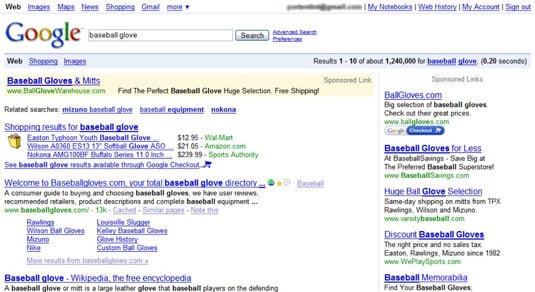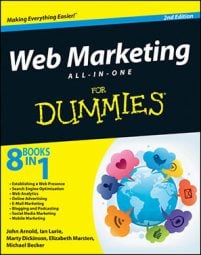Pay per click (PPC) — also known as cost per click (CPC) — is a type of paid advertising used in web marketing, such as a paid search, sponsored listings, sponsored links, and partner ads. In a PPC model, the advertiser pays the host of the ad space if a user clicks its ads and goes to the destination URL or landing page — the site where the person ends up.
PPC ads are often used in search engines like Google, Yahoo!, and MSN, generally along the top and right sides of the pages that contain search results. These ads don’t appear unless someone performs a search in that engine, and the ads that do appear are those that the engine deems most relevant to the user’s search. This way, someone searching for a baseball glove isn’t shown ads for shoes.

To get your ads to show up alongside relevant searches in a search engine, the search engine walks you through the PPC account creation.
Each search engine’s process is a little different, but here are the most basic steps you should be prepared to complete:
Create a PPC account with the search engine.
Create campaigns and ad groups around the products or services to be advertised.
A campaign is where you set many of your options, such as budget and geography. Ad groups are tightly targeted groups that make up the campaign and that house your ads and keyword lists.
Determine a list of keywords.
Keywords are words and phrases that describe, or are features of, the products or services to be advertised.
From the list of keywords, create ads that use those keywords to better explain to potential customers what benefits, features (such as styles and colors), or sizes are available.
So when a user searches for, say, women’s red high-heel pumps, she sees ads that are specifically tailored to people who are searching for that product. The search engine determines how well the advertiser’s campaigns and keywords match the search; if they match well, the search engine displays the advertiser’s ad on the result page.

